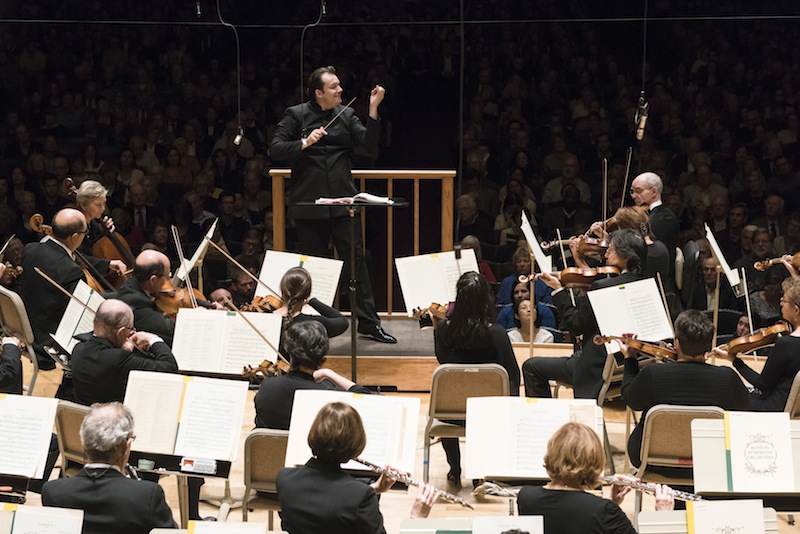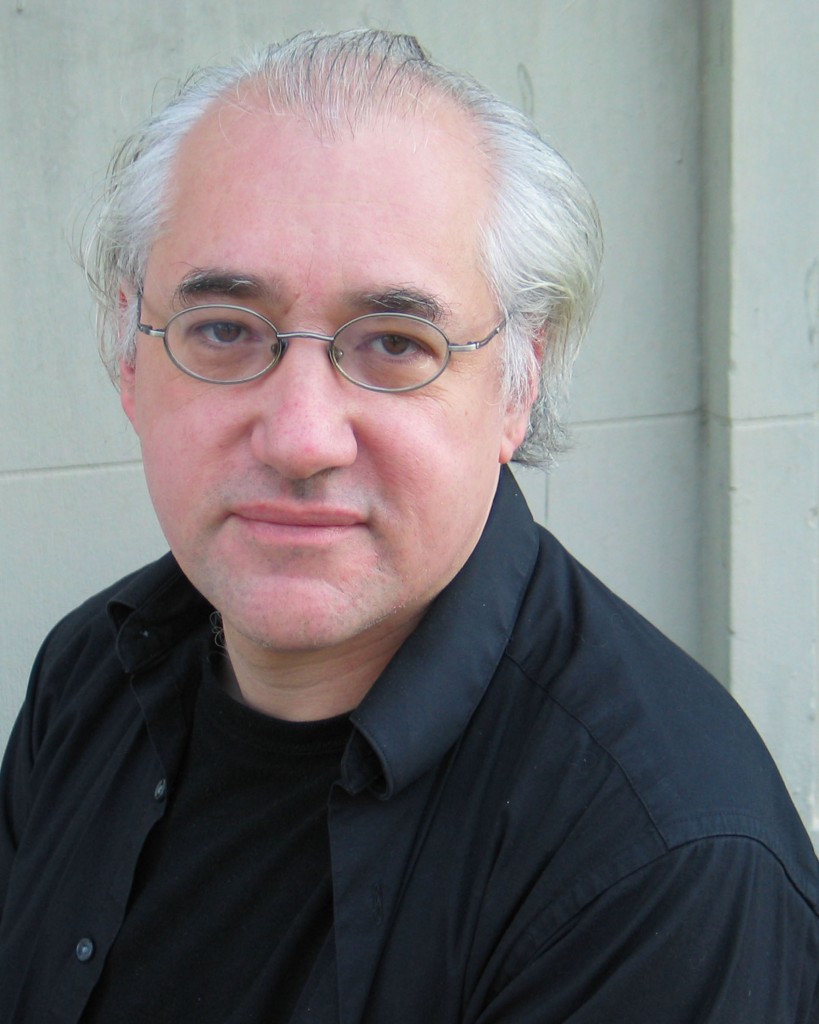Powerful Currier premiere casts long shadow over BSO program

Andris Nelsons led the Boston Symphony Orchestra in music by Currier, Beethoven, and Brahms Thursday night. Photo: Liza Voll
It’s not often that a new piece lingers in the mind so much that it colors one’s perception of the more familiar works that follow it.
That is what happened Thursday night at Symphony Hall, as Andris Nelsons began the Boston Symphony Orchestra program with Sebastian Currier’s Divisions, whose vivid evocation of conflict and ambivalence proved capable of casting its shadow over a Beethoven concerto and a Brahms symphony.
Composed as part of an international commissioning project for orchestral works to commemorate the 100th anniversary of World War I, Divisions grapples with the mixture of light and darkness in human nature, and suddenly Beethoven seemed to be doing the same in his Piano Concerto No. 3 in C minor, and likewise Brahms in his sunny (we thought) Symphony No. 2 in D major.
The performance was neither a world nor a U.S. premiere—the Seattle Symphony Orchestra gave both last April, and the third co-commissioner, the National Orchestra of Belgium, performed the work in June. But it was the BSO’s first performance of any piece by the Pennsylvania-born, New York-based Currier. One hopes there will be many more.
The title Divisions plays on the fractious side of human nature—represented by the wildly assorted fragments of music with which the piece opens—and on the old term “divisions,” meaning variations. The word also has a military meaning, but no Shostakovich-style jackboots marched through this music. Instead, as the composer wrote in a program note, “It is one hundred years later,” and he was looking to make “a connection to the present or even the future as much as look back.”
That’s a very American attitude, and one imagines that this piece, the only U.S. composition in a mostly European commissioning project, probably struck audiences “over there” as highly American in sound as well, from the restless energy and short attention span of its opening to its craggy dissonances à la Copland’s sterner side and fervent string passages right out of Harris and Schuman.
Perhaps the most native sound of all was a high, lonesome trumpet, evocatively played by Thomas Siders, floating over the softer passages like the protagonist of Copland’s Quiet City re-asking Ives’s unanswered question.
Currier seems to have one of the best ears in the business, and in Divisions he treated the orchestra as a rich instrument instead of as a machine for making special effects. It was a pleasure to hear the attentive Nelsons bring the piece’s heterogeneous elements together as the divisions of the human heart began to work together as “divisions” (variations).
All the while, however, a deep, muffled, menacing brass chord stood off to the side, a reminder of irreconcilable things and of latent violence, and the piece closed ambiguously, pianissimo.
The audience’s response, by contrast, was loud and enthusiastic, and there were cheers for the composer when Nelsons escorted him onstage.
Perhaps it was just a listener’s imagination, but following the dark reflections of the Currier work, the military snap of the opening bars of Beethoven’s C minor Piano Concerto sounded unusually blunted and restrained in Nelsons’s rendition.
Both the conductor and piano soloist Lars Vogt—substituting for Paul Lewis, reportedly recovering from surgery—seemed to approach the piece rather gingerly and reflectively, varying the tempo freely and maintaining a chamber music-like conversation instead of going for more symphonic momentum and resonance.
This tentative attitude nearly sank the second movement, as a gap opened between Vogt’s introverted playing, often barely audible and tending to defer to even the most routine woodwind parts in the orchestra, and Nelsons’s lush, passionate orchestral tutti.
Sonic balance (if not agreement on the tempo) was restored in the finale, as Vogt asserted himself with rather brittle forte playing and buttery fast scales. All’s well that ends well, and Vogt’s fleet, brilliant playing in the Presto coda, smartly supported by Nelsons and the orchestra, brought more cheers.
The evening’s emphasis on the mysterious and meditative continued in the soft-focus opening of the Brahms symphony, conducted by Nelsons mostly with just a batonless right hand carving the air. However, more forceful passages later had plenty of rhythmic punch, and juicy tone poured out of the violas in the waltz-like theme.
The second movement had some difficulty coming together, perhaps from a shortage of rehearsal. The horns were sometimes too loud, masking the opening cello theme, and other balance problems muddied the subtle shifts in harmony. Unusually for these players and this conductor, the orchestra didn’t respond fully to Nelsons’s exhortations in the big crescendos.
In contrast, the musicians stayed right with the conductor for his striking interpretation of the third movement, all loose and swimmy with the Allegretto main theme (that wavy right hand again), crisp and very fast in the Presto episode. Brahms’s subtle way of weaving woodwind lines in and out of each other was delightfully realized.
In the program notes, the Brahms biographer Jan Swafford described the symphony’s finale as “a romp,” which of course it is, but not without some lingering shadows. Nelsons gave these their due, but no more, as he exuberantly banished the evening’s dark thoughts in a final blaze of brass.
Brahms, who endlessly battled despair and pessimism in his life and music, definitely won a round in his Second Symphony, which proved just the piece to bring Thursday’s listeners back from a new work’s haunting reflections on war.
The program will be repeated 8 p.m. Saturday. bso.org; 617-266-1200.
Posted in Performances




